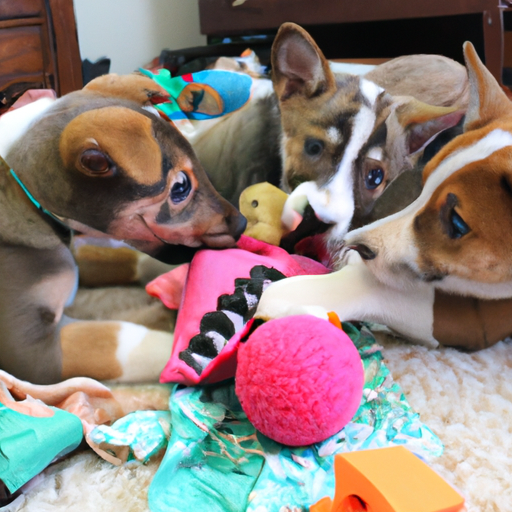As a caregiver of a new puppy, you might be wondering about the teething process and how to handle it. This article will cover everything you need to know about teething puppies.
Understanding Puppy Teething
Just like human babies, puppies go through a teething process as they grow. This is a necessary part of their development, but it can also cause discomfort and result in destructive behavior.
The teething process in puppies happens in stages:
- Birth to 2 weeks: Puppies are born without teeth.
- 2 to 4 weeks: The baby teeth or deciduous teeth start to come in.
- 4 to 6 months: The adult teeth start to replace the baby teeth.
During this process, your puppy may experience discomfort and will likely have a strong urge to chew.
Signs of Teething in Puppies
Your puppy may display a number of signs that they are teething. These can include:
- Increased chewing
- Drooling
- Decreased appetite
- Swollen, red gums
- Visible teeth pushing through the gums
How to Soothe a Teething Puppy
There are several ways you can help soothe your puppy’s discomfort during the teething process.
- Chew Toys: Provide a variety of chew toys. This not only helps alleviate discomfort but also keeps your puppy from chewing on furniture or other items.
- Cold Treats: Cold treats can soothe sore gums. You can purchase puppy-friendly ice treats or even make your own.
- Pain Relief: Consult your vet about over-the-counter puppy-safe pain relievers.
Choosing the Right Chew Toys
Choosing the right chew toys for your teething puppy is crucial. Here are some things to look for:
- Size: The toy should be large enough that your puppy can’t choke on it, but small enough for them to comfortably hold and chew.
- Material: The toy should be made of durable, puppy-safe material. Avoid toys with small pieces that could break off and be swallowed.
- Variety: Providing a variety of toys can keep your puppy interested and cater to their different chewing needs.
Preventing Destructive Chewing
During the teething process, your puppy may be tempted to chew on things they shouldn’t. Here are some tips to help prevent destructive chewing:
- Puppy-proof your house: Remove or protect items that your puppy might be tempted to chew.
- Redirect: If your puppy starts chewing on something they shouldn’t, redirect them to a chew toy.
- Positive reinforcement: Reward your puppy for choosing to chew on their toys.
When to See a Vet
While teething is a normal part of a puppy’s development, there are times when you should consult a vet. These include:
- Your puppy is in excessive pain or discomfort.
- Your puppy is not eating or losing weight.
- You notice broken teeth or other dental problems.
FAQ
Q: When do puppies start and stop teething?
Puppies start teething around 2-4 weeks old and typically finish by the time they’re 6 months old.
Q: How can I tell if my puppy is teething?
Signs of teething include increased chewing, drooling, decreased appetite, and red, swollen gums.
Q: What can I give my puppy for teething pain?
You can provide chew toys, cold treats, and, with your vet’s approval, over-the-counter pain relievers.
Q: Can teething cause my puppy to lose their appetite?
Yes, the discomfort of teething can cause a decrease in appetite. If your puppy is refusing to eat or losing weight, you should consult a vet.
Q: How can I prevent my puppy from chewing on furniture or other items?
You can help prevent destructive chewing by puppy-proofing your home, redirecting your puppy to chew toys, and using positive reinforcement.
Teething can be a challenging time for both you and your puppy. But with the right knowledge and tools, you can help your puppy navigate this stage with minimal discomfort and disruption.



